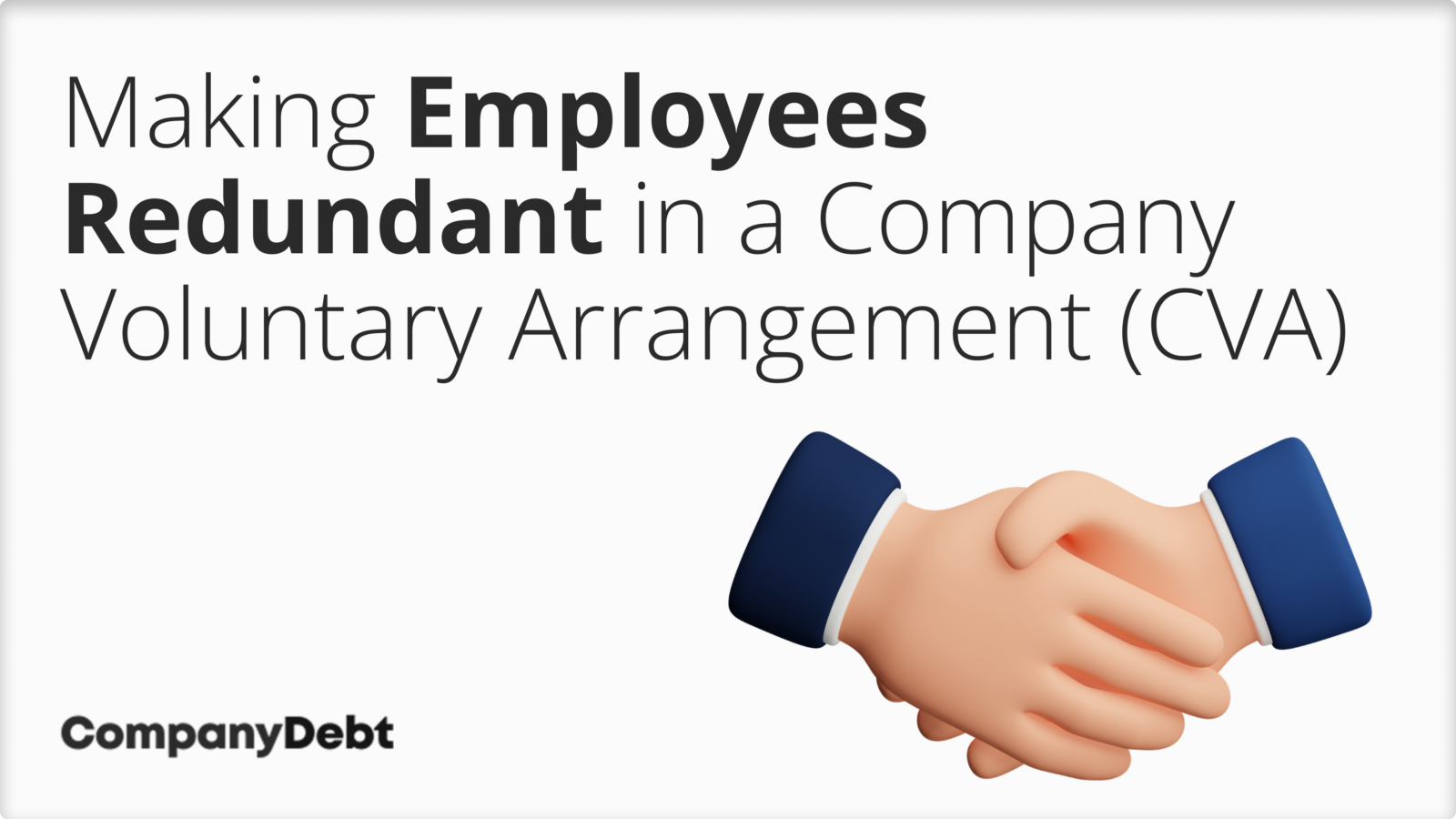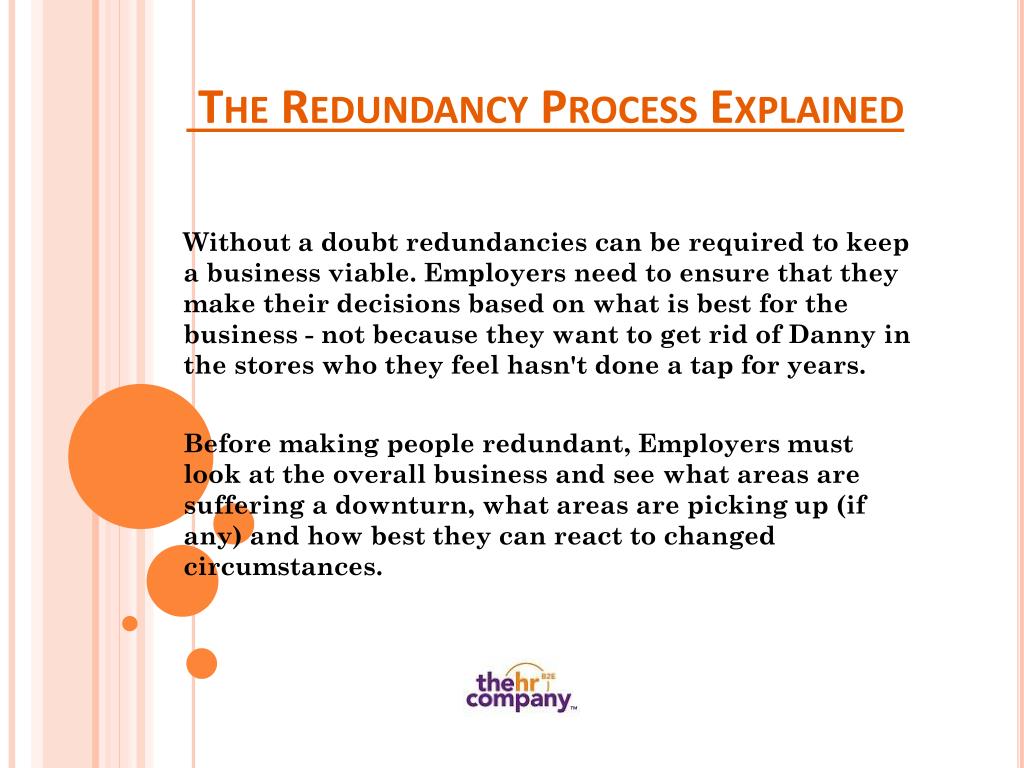Exploring the Interplay In Between Company Redundancy and Business Versatility for Future Development
In the dynamic landscape these days's business globe, the intricate partnership between firm redundancy and organizational adaptability becomes a crucial variable for continual growth and success. Firms commonly face the obstacle of striking a delicate balance between keeping a level of redundancy to alleviate risks and promoting versatility to react quickly to the ever-evolving market needs. This fragile interplay holds the crucial to not just enduring in rough times yet also prospering despite uncertainty. As we explore the diverse dimensions of this interaction, intriguing insights right into just how companies navigate these complexities to pave the method for future development await.
Importance of Company Redundancy
Company redundancy is a vital component that improves business resilience and mitigates operational risks. By incorporating redundancy measures within the business structure, firms can much better stand up to unforeseen disruptions and changes in the business setting. Redundancy functions as a critical barrier, permitting business to adjust and react efficiently to unexpected challenges without endangering essential procedures.
One trick facet of the value of company redundancy is its role in making certain connection during times of crisis. When encountered with abrupt modifications or emergency situations, repetitive systems, resources, or employees can tip in to preserve essential functions and avoid widespread disturbances. This continuity not only safeguards the business's credibility and client trust fund but additionally lessens financial losses and functional downtime.

Strategies for Business Adaptability

An additional essential approach is purchasing modern technology and infrastructure that can support flexibility and scalability. Executing electronic devices, automation, and information analytics can improve procedures, improve effectiveness, and offer useful insights for notified decision-making. In addition, creating adaptable business frameworks that permit for fast changes to market characteristics and client requirements is necessary for staying competitive in a swiftly evolving setting. By proactively recognizing potential interruptions and chances, organizations can proactively adapt and thrive in an ever-changing service landscape.
Balancing Redundancy and Flexibility
Attaining a harmonious stability between operational redundancy and business flexibility is critical in navigating the intricacies of a vibrant service setting. Striking the best balance between redundancy and versatility is a fragile process that calls for a deep understanding of the organization's goals, market dynamics, and danger resistance.
To attain this equilibrium, companies require to perform normal assessments of their procedures to identify areas where redundancy is necessary for risk reduction and where flexibility can drive technology and development. Applying adaptable structures, promoting a culture of constant knowing and improvement, and encouraging open interaction throughout all levels of the organization are key strategies to harmonize redundancy and flexibility effectively. By aligning these 2 essential elements, business can position themselves for lasting development and success in an ever-changing company landscape.
Study on Adjustment Success
In examining instances of effective organizational adaptation, it becomes apparent that the interaction between functional redundancy and versatility is a specifying aspect in shaping resilient services. One compelling study is that of Netflix. Originally a DVD go to my site rental service, Netflix showed exceptional versatility by transitioning into a streaming system when digitalization interfered with the sector. By tactically investing in innovation and content development, Netflix not only grew yet survived in a quickly evolving market. One more standout instance is Amazon. Starting as an on-line bookstore, Amazon continuously adjusted its company model, expanding into varied sectors such as cloud computer and expert system. This adaptability allowed Amazon to remain in advance of competitors and fulfill altering customer demands. Lastly, Adobe provides a notable image of effective adjustment. The business shifted from marketing software application licenses to a subscription-based version, ensuring persisting earnings streams and enhanced client interaction. These study underscore the relevance of functional redundancy paired with business adaptability in fostering long-term growth and competitiveness.
Structure Strength for Future Development
Structure durability for future growth requires a tactical alignment of operational procedures with market dynamics and emerging trends. Companies must adjust to changing settings by cultivating a society of versatility, technology, and constant improvement. Resilience entails not just recovering from obstacles however also proactively preparing for future obstacles. One essential element of building strength is buying robust threat administration techniques to mitigate possible interruptions. This consists of situation planning, diversifying supply chains, and blog creating contingency strategies for different contingencies (who pays redundancy money).
Furthermore, promoting solid relationships with stakeholders, such as clients, staff members, providers, and the area, is vital for weathering uncertainties and preserving trust fund and assistance throughout turbulent times. Efficient interaction and transparency play an important duty in structure durability, as they aid promote and align expectations partnership in browsing unpredictabilities.
Additionally, organizations require to prioritize understanding and development initiatives to upskill workers and furnish them with the essential devices to adapt to altering scenarios. By spending in their labor force, business can boost their versatility and dexterity, inevitably reinforcing their strength for lasting future development.
Verdict

In the dynamic landscape of today's service globe, the intricate connection in between firm redundancy and organizational versatility arises as a crucial variable for sustained growth and success. Business usually face the difficulty of striking a fragile equilibrium in between maintaining a level of redundancy to alleviate threats and cultivating adaptability to respond promptly to the ever-evolving market demands.To achieve this balance, business require to perform normal assessments of their operations to identify areas where redundancy is required for danger reduction and where flexibility can drive advancement and development.In verdict, the interaction in between firm redundancy and organizational flexibility is vital for future development. see this here Structure durability via a mix of redundancy and flexibility will certainly make certain that firms are prepared for the obstacles of the future.
Comments on “If a Company Goes Bust Who Pays Redundancy? Legal Insights for UK Personnel”